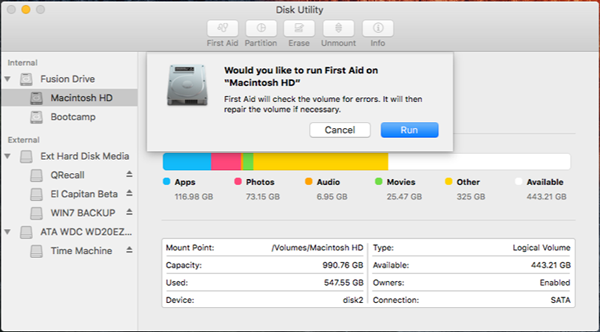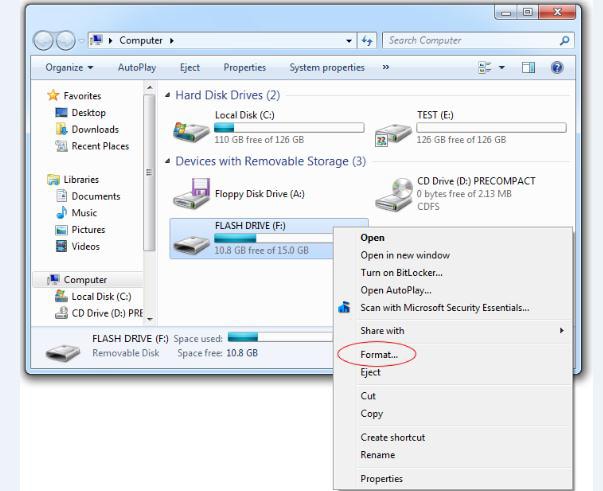- Mac Os Catalina Flash Player
- Format Flash Drive Mac Catalina Island
- Download Catalina Mac
- Format Flash Drive Mac Catalina Mac
- Format Flash Drive Mac Catalina Patcher
If you have more than one Mac you want to upgrade to macOS 10.15 Catalina but don't want to waste so much bandwidth downloading it for each machine, one option is to create a bootable installer on. Use the mouse pointer or the arrow keys on your keyboard to select the disk called Install macOS Catalina in the drive list that appears on the screen. Once the USB drive has booted, select Disk.
Recover data from formatted USB flash drive? Pro version: Free version: Sometimes we find it neces. Click the Format pop-up menu, then choose a file system format. (Optional) If available, click Security Options, use the slider to choose how many times to write over the erased data, then click OK. Secure erase options are available only for some types of storage devices.
Yo just got a new external hard drive and want to use it on your Mac. However, the Mac OS does not allow you to write data to the drive. You may wonder how to reformat an external hard drive on Mac. Follow the tutorial below, you'll get everything covered.
Bonus: How to Recover Data from Formatted External Hard Drive on Mac
Reformatting an external hard drive for use with Mac OSX is not as difficult as it might seem. In a few simple steps you are ready to go and can save your back-up files to the external drive, keeping your information safe and giving you peace of mind. Keep in mind that a MAC can generally read other file formats, but for the best performance and to create a bootable disk, formatting exclusively for MAC is required.
Part 1: Which File Format You Should Choose?
Before you begin formatting the drive, there are a few things to do. The most important, you should decide which format to use.
Mac Os Catalina Flash Player
There are a few file formats you can use, but it depends on the purpose you want to use the drive for. Which one is right for your circumstance? We'll describe them here, you'll know your choice after reading the details.
APFS: This is the default file system in Macs with High Sierra. It is efficient and reliable. However, it won't be readable and usable on machines that are not running Mac High Sierra, and Windows or Linux PCs. What's more, it is compatible with SSD and flash storage devices only.
Mac OS Extended (Journaled/HFS+): If you didn't update your Mac OS to High Sierra, the default file system on your Mac shoule be Mac OS Extended. Mac OS Extended (encrypted) would be an ideal option if you probably carry your laptop or external drive here and there. You can encrypt it so that no one can access the contents on your drive.
MS-DOS FAT (aka FAT32): In addition to Mac, it can also be written and read by Linux and Windows. It enables you to regularly share files with your friends who own a PC. Nevertheless, this older file system is limited to no more than 4GB and there might be security issue and disk errors.
ExFAT: It is similar to ExFAT which can be read by both Windows and Mac, but it can store more than 4GB files.

NTFS: As the default file system in Windows, it can only read by Mac OS, writing to it is not available. Luckily, there are third-party tools to help you do so.
Part 2: Format External Hard Drive for Mac with Disk Utility
Formatting an external hard drive would erase everything on it. Hence, you must backup your important files before reformatting the drive if you want to save them. The easiest way is to drag it from one drive to another.
All is set, then you can go ahead to format the drive on your Mac. Disk utility - the MacOS utility application can help you with this. Just follow these steps below:
Step 1. Connect the external drive or the USB drive to the MAC.
Step 2. Start the Disk Utility, located under Applications > Utilities.
Step 3. Find the name of the drive in the left side of the Utilities window and select it. And click Erase button.
Step 4. Follow on-screen prompts to choose Mac OS Extended (Journaled) file system and allow the disk to format.
Bonus: How to Recover Data from Formatted External Hard Drive on Mac
In case you forgot to backup files before formatting the external drive. Here comes the cure - iMyFone AnyRecover - a one-stop solution to recover deleted, lost or formatted files from Mac.
Follow these simple steps using AnyRecover to get your files back!
Get Ready!
First, download and install AnyRecover, following on-screen prompts to accomplish the task.
AnyRecover 20% off Coupon Code: ANY-ART-D20
Don't miss the opportunity to get AnyRecover license at the lowest price on the market. Don't know how to apply it, check the instructions here:
Get Set!
1. After loading AnyRecover, plug your external hard drive into your Mac directly or via USB.
2. Next select the drive under 'External Removable Devices' tab, click 'Start' to begin scanning lost files on the drive.
Go!
1. AnyRecover takes a moment to scan your drive. Once done, it will list out all scanning results by file type.
2. Double click a single file to preview it before recovery.
3. Select the files and press Recover to get them back.
What If?
What if my files were not found? Fear not. We can take this a step further. Enable 'Deep Scan' to try one more time, follow the steps above just as before to locate and recover your files.
It is plain to see that AnyRecover for Mac is a tool worthy of top shelf treatment in your arsenal of items that are used to defend, recover and keep your system up and running. Don't get caught without the file you need for that meeting or stumbling looking for baby photos that were stored on disk and suddenly 'hid' from your view. Allow AnyRecover to find and recover your lost files. AnyRecover is easy to use but provides sophisticated results that mean you know what you're doing!
by Shirly Chen, updated on 2019-07-09 to Mac Data Wipe
Format Flash Drive Mac Catalina Island
Through this guide, we will show you how to format and wipe hard drive under macOS Catalina. There are some people who have Mac computers they do not use and decide to sell or give them to friends or relatives, but they feel worried about the private files stored on the Mac hard drive. When deleting our files, they remain somewhere else, so it is possible to recover them from the trash bin or using a data recovery software. Deleting permanently should be the best choice, but how can we do it? Here, we will recommend using DoYourData Super Eraser for Mac, which is considered one of the best programs used for formatting hard drive and wiping data permanently.

Format and wiping hard drive under macOS Catalina
Sometimes, people need to format and wipe hard drive under macOS Catalina to permanently delete private files stored on it and so be sure they will not be restored later. Most of the time, people decide to wipe their drives because they will not use them again or maybe because they will give away or sell the hard drive or the Mac device. As we know, there are alternatives to retrieve lost or formatted files if they are not permanently erased and if we need to do this, we can use DoYourData Super Eraser for Mac, which is special for permanent data deletion.
DoYourData Super Eraser for Mac is a great software targeted at deleting data permanently. It is fully compatible with macOS Catalina or other Mac systems. With this disk formatting tool for macOS Catalina, you can securely and quickly format and wipe hard drive on macOS Catalina.
Using DoYourData Super Eraser for Mac is very simple, which helps us delete our private information from our Mac in an easy and permanent way. We can do it following these steps:
Step 1: Download and install DoYourData Super Eraser; then, run the software on our Mac.
Step 2: Choose mode ‘Wipe Hard Drive’.
Step 3: Select device or drive we want to format and click on the ‘Wipe Now’ button. DoYourData Super Eraser for Mac will format the hard drive and permanently erase all the files.
As you’ve seen, it is very simple to format and wipe hard drive on macOS Catalina with DoYourData Super Eraser for Mac. Once the formatting process gets finished, all the data on the hard drive will be permanently erased. Before you sell, donate, or give away your hard drive, you’d better permanently wipe the hard drive because the deleted or formatted data can be easily recovered by data recovery software.
Download Catalina Mac
DoYourData Super Eraser for Mac gives a quick and secure solution for macOS Catalina users to format/wipe HDD or SSD. It will never cause any damage to the hard drive.
Format Flash Drive Mac Catalina Mac
Related Articles
Permanently and securely erase data from hard drive or external storage device under Mac OS with certified data erasure methods.
Format Flash Drive Mac Catalina Patcher
Hot Articles